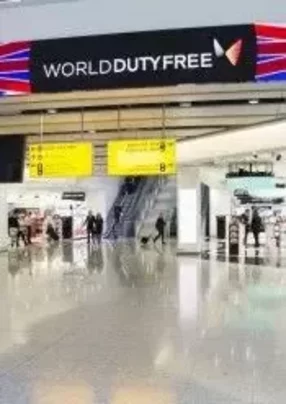World Duty Free Group has extended its global reach over the past eight years through its ever-strengthening industry reputation and some strategic acquisitions, and is now looking to capitalise on recent successes through equally global developments of its supply chain.
As a consequence of recent, international acquisitions, World Duty Free Group is in a better position than ever to continue its expansion through the tendering of new airport and terminal duty free stores moving forward, and with a logistics and distribution strategy more than capable of keeping up with the growth.
Justin Suter, Global Head of Supply Chain and Logistics at World Duty Free Group, said: “When bidding for airports, the whole supply chain and logistics operation is becoming more and more important because the authorities have really recognised the key role that an efficient system plays in the complex travel retail sector.
“They look at how good your supply chain will be and whether you’ll be able to get great on- shelf availability and get new products to market quicker than others.
“The fact that we’ve got a good supply chain and have received a number of awards over recent years for the quality of our operation is becoming increasingly important.”
Distribution strategy
Distribution has been a key area of interest for World Duty Free Group in adapting to this
growing trend, with the company striving for consistent best practice, supply times and operational excellence, despite its widespread international presence.
“We’ve put in place our new strategy which is really focused around looking at the end-to-end supply chain, from supplier to shelf, based on an analysis of the business, where our brand partners are, and where our airports are,” Suter said.
With 85 percent of all goods in its shops manufactured across Europe, the construction and development of a brand new distribution centre in Barcelona represents phase one of the three pronged approach that the company now takes towards its global distribution chain.
Suter continued: “Over the past 18 months, we have been investing in our new global distribution centre which is a significantly bigger operation than our previous one. This gives us the capacity we need to cater for our ever growing business, as well as the option to talk to
our suppliers about using any of these channels without any logistics constraints.
“There will also be some instances where our brand partners will already have a distribution network set up, so it makes sense to continue to deliver directly in those cases. Conversely, where brand partners have a less developed supply chain or it makes sense for us to carry one point of stock, our global distribution centre allows our suppliers to scan and deliver everything into there and we will then deliver it to our stores around the world.”
Another development, as part of World Duty Free Group’s commitment to be as flexible and collaborative as possible, involves the establishment of consolidation platforms. These do not carry any stock, but provide the option of bringing numerous suppliers’ goods together and grouping them into full containers to further reduce costs and enhance efficiency.
Brand partnerships
The diversity and complexities involved in travel retail differ vastly from traditional high street retail practices, with three different stakeholders pivotal to the business, in the form of the stores’ customers, the airport owners, and the brand partners looking to showcase their goods in the shops.
This makes a consistent global model all the more important, especially considering that a large number of World Duty Free Group’s suppliers, or brand partners, are similarly global, and are often bigger than the travel retailer itself.
“Typically our big suppliers are the likes of Diageo, L’Oreal, Estée Lauder Companies, Chanel etc, who often have their own travel retail sector within their business,” Suter said. “These kinds of partners see travel retailers like us as the window to their ideal customer market.
“So in the case of Chanel for example, a typically affluent demographic who can afford to travel frequently represents exactly the audience they want to have a conversation with through our shops.”
With more than 120,000 SKUs, the company is now a pivotal cog in its brand partners’ marketing
strategies, especially in the beauty industry where the industry particularly thrives.
To cater for the diversity in goods, cultural differences in product trends and the different timeframes needed to transport goods to its stores, World Duty Free Group has paid special attention to honing its forecasting and replenishment (F&R) system.
Suter explained: “We have invested a lot into a leading class F&R system because you need to be able to order the right stock to be delivered into the country, but you also need quick replenishment from the distribution centre into the shops. Our target is to respond within 24 hours for all large airports.”
Global expansion
To set itself apart in this dymanic industry requires not just a world class service and accompanying supply chain strategy, but the right personnel too and this is something that World Duty Free Group has been very focused on over the years.
The ability to work, think and act globally is a very specific skill that is required to ensure that the same best practices are experienced across all operating continents, where, theoretically, a local supply chain manager could be moved from Helsinki to Vancouver and implement the same strategy and model from the outset.
In turn, this core consistency and high standard of expertise will make the inevitable future expansion all the more viable and successful.

